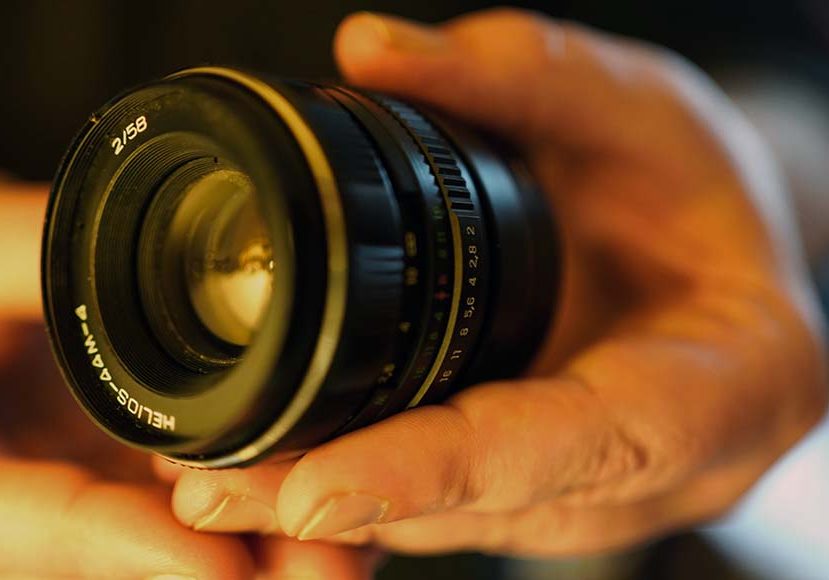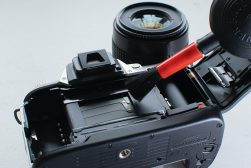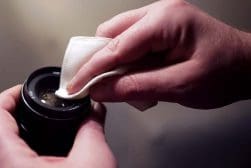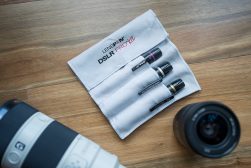
How to Prevent and Remove Camera Lens Fungus
Explore effective methods to prevent and remove camera lens fungus, safeguarding your equipment for clear, high-quality photography.
Learn | By Andrew Dilks
This guide explains how to prevent and remove camera lens fungus.
Camera lenses require delicate handling, but issues such as lens fungus can still cause problems.
If left unchecked, fungal growth can not only permanently damage your lens, but affect other elements of your camera.
To help with the problem, I’ve outlined the tell-tale signs to be aware of and the steps you can take to prevent fungus growth.
What Is Lens Fungus?
The problem of camera lens fungus occurs when fungus spores invade the lens through moisture and dust particles.
Over time, these spores can work their way into the interior of the lens, forming fungal growth that comes through as blotches and spots.
As such, lens fungus typically occurs in humid environments, where large volumes of moisture circulate in the atmosphere.
The problem is especially profound in older lenses that are constructed without lens coatings to help protect them from fungus.
Likewise, older lenses and budget-friendly lenses that lack comprehensive weather sealing are also more susceptible to fungus growth.
What Does Fungus Look Like In a Lens?
Fungal spores can be difficult to isolate, particularly if they’re only just starting to form on your camera lenses.
If you think fungus is the issue, carefully inspect the lens to see if you can find any small white blotches scattered on the surface.
While camera haze and condensation may be the cause, if you suspect lens fungus is creating the anomalies, it needs to be addressed.
Does Lens Fungus Affect Image Quality?
If your photographs appear hazy or feature fuzzy spots across the frame, the chances are your lens has gathered fungus.
Check to see if these blemishes manifest as web-like spots and patches, and see if they’re visible directly on the lens itself.
If the issue hasn’t been resolved, you may notice that images exhibit a greater degree of these anomalies as the fungus spreads.
Can Lens Fungus Spread to Your Camera?
While lens fungus growth can lead to long-term damage to lenses if left untreated, this can be avoided if dealt with early on.
Failure to prevent lens fungus spores from growing, and can significantly impact the camera’s overall performance over time.
If the fungus thrives, it can go on to damage other camera elements, including the sensor, viewfinder, and mirror.
This can lead to significant and expensive repair jobs, or even render the camera completely useless.
Can Fungus Be Removed From a Camera Lens?
While lens fungus can potentially cause serious issues, fortunately, it’s possible to remove fungus growth from your camera lens.
How Much Do You REALLY Know About Photography?! 🤔
Test your photography knowledge with this quick quiz!
See how much you really know about photography...

It’s important to note that many warranties for lenses don’t cover lens fungus, so check with the manufacturer to be sure about a specific lens.
The good news is, that removing fungus from your lens can be easily done, particularly if the fungus is confined to small areas.
If the fungus is around the periphery of the lens, it can still be used to capture photographs with a little post-production fixing.
Are Lens Fungus Cleaning Kits Worth It?
In addition to the quick fixes I’ve outlined above, there is a range of home lens cleaning kits available to buy.
Many of these are relatively inexpensive and often come with a variety of handy accessories to streamline the cleaning process.
This includes brushes and air blowers to minimize your skin’s contact with the glass during the cleaning process.
Whether or not they’re worth the investment depends entirely on particular shooting circumstances and the likelihood of conditions that promote fungal growth.
If you’re shooting in humid climates regularly, picking up a cleaning kit with the relevant tools could be worth considering adding to your camera gear.
- See also: How to clean a camera lens
How to Check Your Camera Lens for Fungus
If you suspect lens fungus is accumulating on the lens’s surface, you should take steps to check and address the issue.
Remove the lens from the camera body, along with any protective caps, and then hold the lens up to a strong light source.
Check through each end to inspect both sides for any signs of fungal growth, then follow the steps outlined above to clean them.
If UV light and gentle cleaning of the affected areas don’t rectify the problem, you may need to send it for a professional cleaning.
What Should I Do if I Find Fungus On One of My Lenses?
Once you’ve determined the root cause of the issue, you can take steps to remove the fungus and improve your images.
Start by removing any filters you have on the lens and exposing it to direct sunlight, as UV light kills fungus spores.
There are also plenty of UV lamps available to buy, so you don’t have to rely on good weather to prevent fungal growth.
Lens fungus can also be cleaned off the lens using a suitable cloth and a half-and-half mixture of hydrogen peroxide and household ammonia.
Isolate the areas of the lens where the fungus has developed and use the cloth to wipe the surface clean gently.
5 Tips for Preventing Lens Fungus
While dealing with fungus growth on your camera lens without paying a professional lens technician is possible, it’s better to avoid the issue entirely.
Here are five reliable methods you can follow to prevent lens fungus from forming and avoid a potentially risky fix.
Store your lenses in a bright and dry place
Humidity and dust particles often combine to allow fungal spores to latch onto your lenses, so the first step should be to take these conditions out of the equation.
Keep them in a dry and bright place, and if you’ve exposed them to humidity, try to allow your lenses to rest in the sun if possible.
Use a camera lens hood
A camera lens hood is a great way to offer additional protection from potential spores when it’s being used.
It will serve to enhance your lens’s weather sealing and reduce the chance of fungal spores working inside the mechanism.
Use a blower when cleaning your sensor
Blowing dust and dirt away from a lens or camera sensor introduces unwanted moisture into the camera gear.
A camera sensor blower is incredibly cheap and will help keep the amount of moisture on the lens to a minimum.
Stock up on silica gel packets
Silica gel packs are specifically designed to suck moisture out of the surrounding area and are often used in tech packaging.
By replacing your silica gel packets periodically, your camera bag’s moisture levels will stay optimal.
Should You Buy a Lens With Fungus?
While camera lens fungus impairs an image’s contrast and general quality, it doesn’t always render a lens useless.
If you’re considering picking up a cheap lens on the second-hand market and notice fungus, the lens may still deliver strong results.
FAQs On Camera Lens Fungus
How do I know if my camera lens has fungus?
As with lens haze, which forms due to condensation, the formation of fungus on a lens will result in speckled artifacts on your images.
You can also check your lenses directly and see if any fungus has formed on the surface, which will appear as spots and patches inside the lens.
How do I get rid of fungus on my camera lens at home?
There are a few ways you can address lens fungus issues at home and remove it from the lens surface without sending it for repair.
Placing the camera lens in direct sunlight can effectively kill fungus spores accumulated on the lens.
You can also use a cleaning liquid, such as a mixture of hot water and dish soap, to gently wipe away fungal growth from the camera lens.
What fluid is best for cleaning fungus off a lens?
While hot water and soap can work when dealing with fungal growth, their effectiveness can be limited compared to alternatives.
If you have access to isopropyl alcohol and distilled water, you can blend these in a 1:1 ratio and apply it to lens fungus.
Major brands such as Zeiss also produce dedicated lens and optics cleaners, which are specifically designed for lens cleaning purposes.
Is there a way to remove fungus from the lens without opening it?
The most effective way to remove fungus from a lens without risking damaging it is to use UV light from the sun.
This method doesn’t require any disassembly or the need to pay for a professional lens technician.

Check out these 8 essential tools to help you succeed as a professional photographer.
Includes limited-time discounts.













